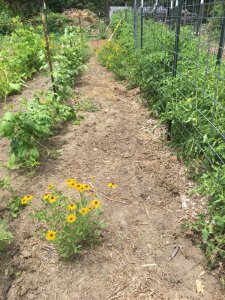flowerbug
Garden Master
Well I have to tell you, most years I just let them go. They generally get over my head by August and I make a trail through them to get to the "pickin' part" of the garden. After everything is exhausted, I turn the sheep in on it and they decimate the weeds. This year I'm trying to grow all I can, so no plant and water and to heck with the weeds. I wish the garden plants grew like the weeds do!
as long as you can knock 'em back before they can drop fresh seeds you're not harming anything by letting them grow. bare ground is hotter ground. i'd rather have a plant growing than not - even if it is a weed - at least for a while. the hard part for me is to get back to all of the gardens to get the weeds that don't have seeds on them disturbed before they start flowering and setting seeds.
in my constant efforts to get rid of oxalis and a few other weeds permanently it is really tough. some of them grow and set seeds so quickly that i pretty much have to get after them as soon as i see them no matter what. and yes, i mean i've been out there weeding in December and January sometimes if the weather has allowed because some of these are really quick. some grasses we have will set seeds any month you let them if the weather will let them grow at all.

